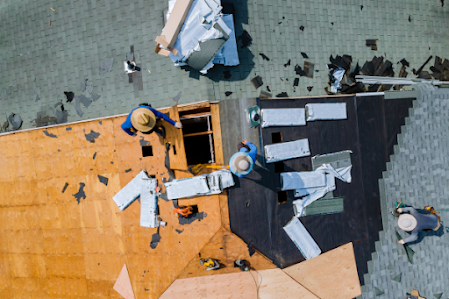From Shingles to Tiles: Choosing the Best Roofing Material for Your Climate
Selecting the right roofing material for your home is a significant decision, and it's not one to be taken lightly. Climate plays a crucial role in determining which roofing material will best suit your needs. Whether you live in a hot, cold, or mixed climate, understanding the advantages and disadvantages of various roofing materials can help you make an informed choice.
Asphalt Shingles: Asphalt shingles are the most popular roofing material due to their affordability and versatility. They are suitable for a wide range of climates, including areas with mild to moderate weather conditions. They offer good insulation and come in various styles and colors. However, in extreme heat or cold, their lifespan may be shorter.
Metal Roofing: Metal roofing, typically made of steel, aluminum, or copper, is an excellent choice for both hot and cold climates. It reflects heat in the summer and sheds snow in the winter. Metal roofs are durable, long-lasting, and low maintenance. They are also environmentally friendly and can be energy-efficient when properly installed with insulation.
Clay or Concrete Tiles: Clay and concrete tiles are well-suited for hot and dry climates. They are excellent at deflecting the sun's heat and can withstand high temperatures. However, in colder climates, they may be prone to cracking due to freeze-thaw cycles. To ensure its longevity, proper installation and maintenance are essential.
Wood Shingles or Shakes: Wood shingles and shakes offer a natural, rustic appearance and are suitable for moderate climates. They perform well in areas with consistent humidity levels. However, they can be prone to rot and mold in high humidity or wet climates, and they may be a fire hazard in dry regions.
Slate Roofing: Slate roofing is exceptionally durable and works well in cold climates. It can withstand freezing temperatures and is resistant to moisture. However, it is a heavy material and may not be suitable for homes with weaker roofing structures.
When choosing a roofing material, it's essential to consider your local climate, as well as your budget, aesthetic preferences, and maintenance capabilities. Consulting with a roofing professional can provide valuable insights into the best roofing material for your specific climate and needs. Ultimately, selecting the right roofing material ensures your home remains protected and comfortable year-round.
To delve deeper into the world of roofs and roof damage, if you're seeking further information or expertise, feel free to explore our resources. We offer a wealth of knowledge to help you understand roof issues and their solutions. Discover valuable insights and guidance on roof care and maintenance.
Click Here: 8 Signs You Have Wind Damage On Your Roof



Comments
Post a Comment